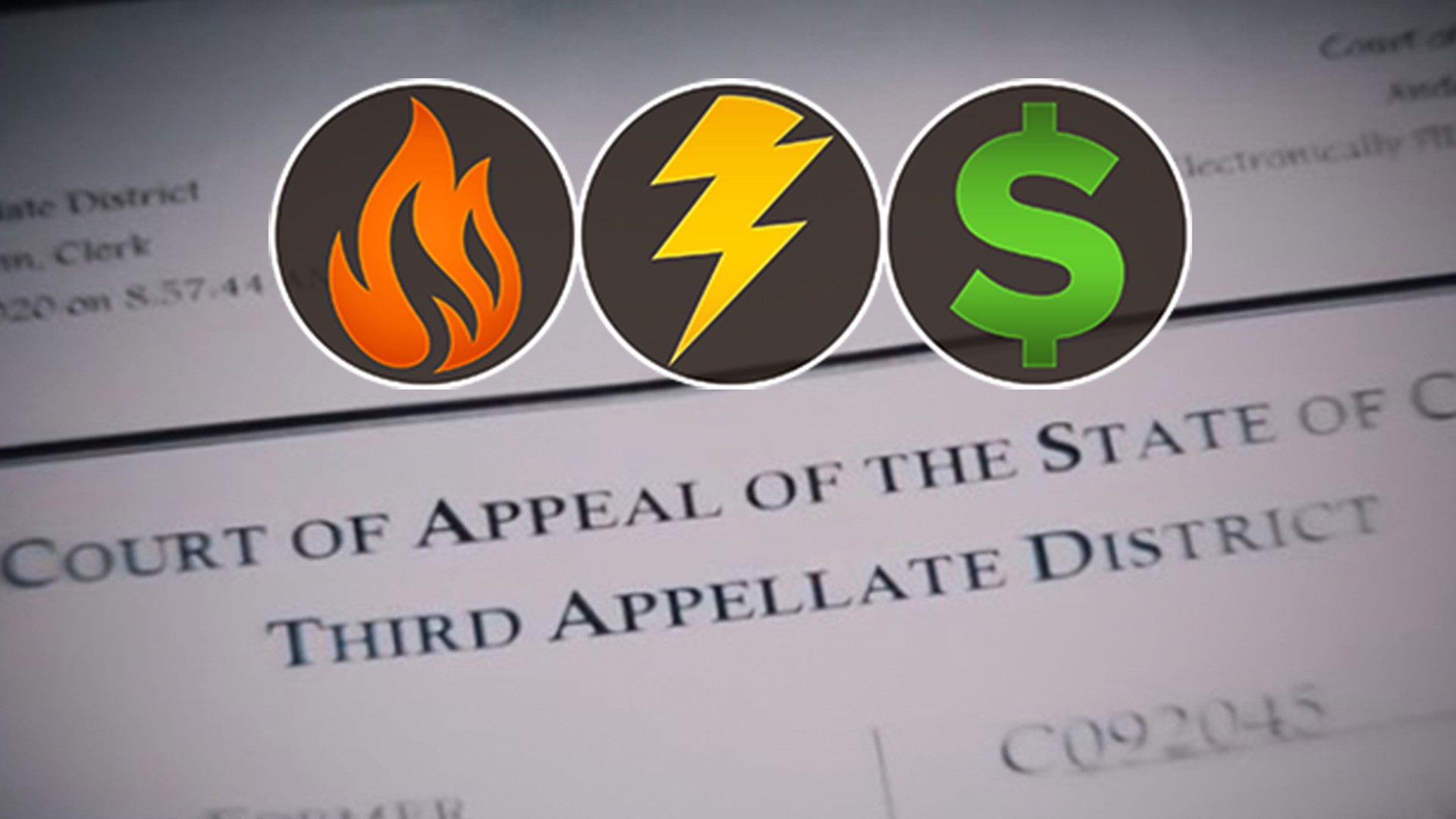SACRAMENTO, Calif — Pacific Gas and Electric Company (PG&E) admitted to 85 crimes for sparking it more than a year and a half ago, but how much detail the public will get to read from the Camp Fire criminal case is in the hands of a panel of three appeals court judges.
Thus far, a PG&E-funded lawsuit has successfully blocked release of the 7,000-page transcript of the grand jury investigation that led the company to plead guilty in June 2020.
“They don't want to release the facts, so we know exactly what happened that caused the Camp Fire,” said Retired Firefighter Steve Bradley, whose grandmother Ethel “Colleen” Riggs was among PG&E’s 84 felony manslaughter victims.

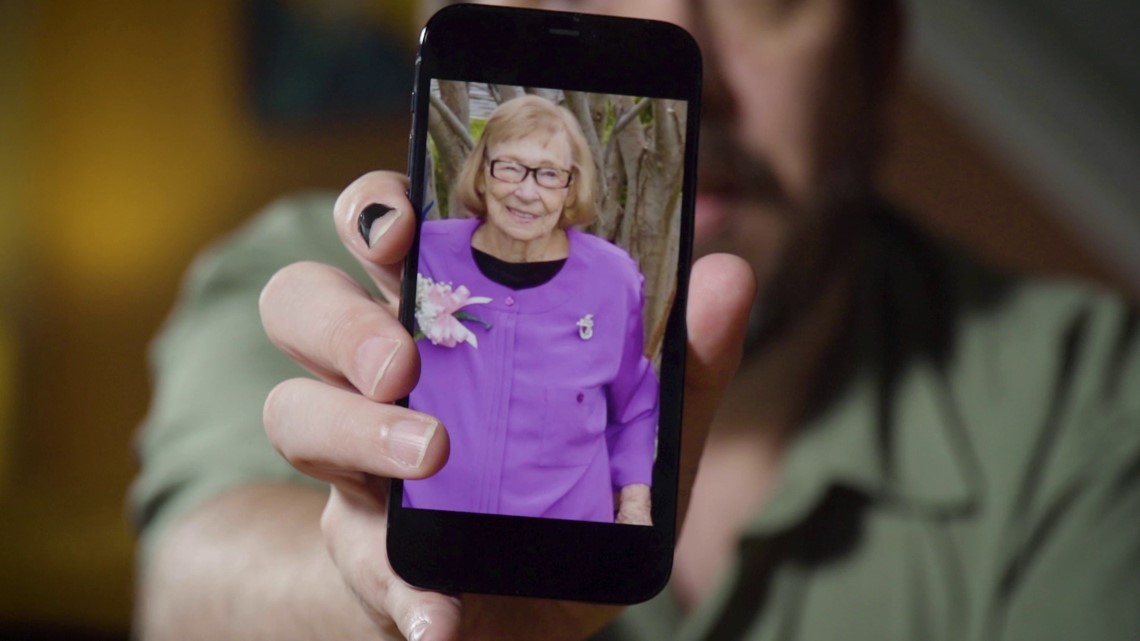
California law makes grand jury records public ten days after the case is completed. Because of that, ABC10 and the Wall Street Journal jointly argued to the court in 2020 that the documents should be made public.
The suit, filed on behalf of 22 once-anonymous PG&E employees, seeks to have their names blacked out from the records.
They claim that having their names published in these records would make them targets for violence.
“People are angry at PG&E employees across the entire service area,” Michael Shepard, an attorney for the PG&E employees, told the court.
Butte County District Attorney Mike Ramsey disputes the notion.

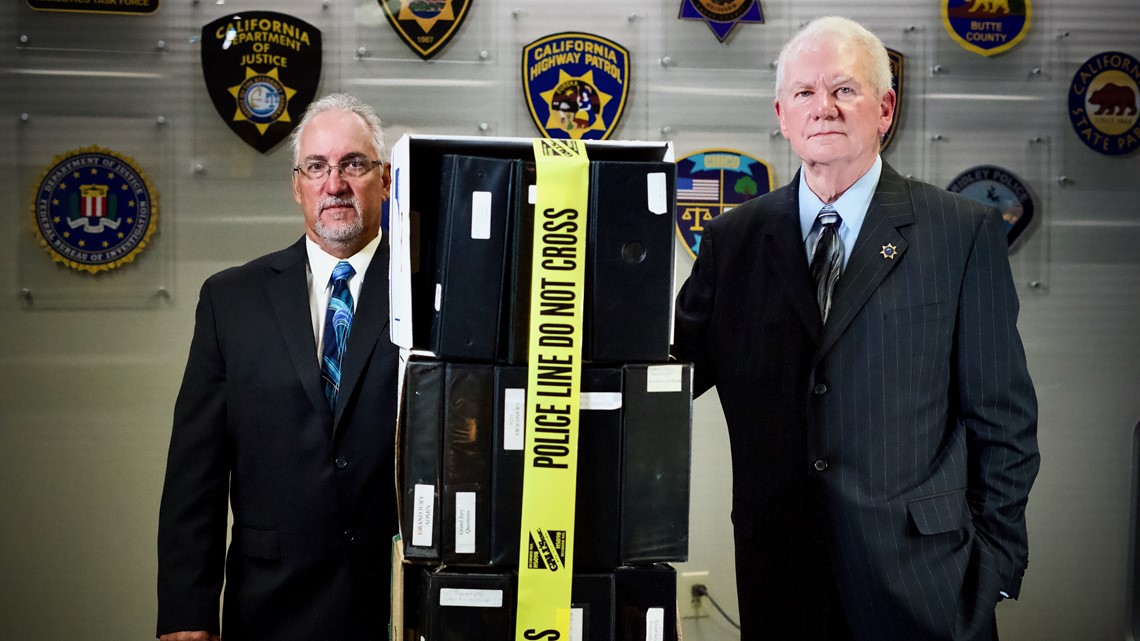
Examples of supposed “threats” filed by the employees include incidents that took place before the Camp Fire, Ramsey said, and none show evidence of reprisals for the company’s actions in the Camp Fire.
“It's an excuse to hide the truth from the public,” Bradley said.
The names of the approximately 200 PG&E workers in the case do not amount to a list of people responsible for the Camp Fire.
They include people who helped prosecutors solve the crimes, people who testified about PG&E’s past crimes on the gas side of the business, scientists from a PG&E lab, and line level PG&E workers who did not make the negligent decisions that sparked the fire.
Prosecutors want the employees’ names to appear exactly as they are in the grand jury record, so readers can draw their own conclusions about who was involved and how.
“I can't make a judgment on whether they were really involved in the criminal activity or not, because I can't see the report,” Bradley said. “I should be able to.”
"The cat is out of the bag"
ABC10 displayed the names of all 22 PG&E employees behind the lawsuit on television and online in a November 2021 report focused on the civil case and the evidence it’s keeping from public view.
We obtained the names when they were accidentally filed on the court’s public docket by their attorneys.

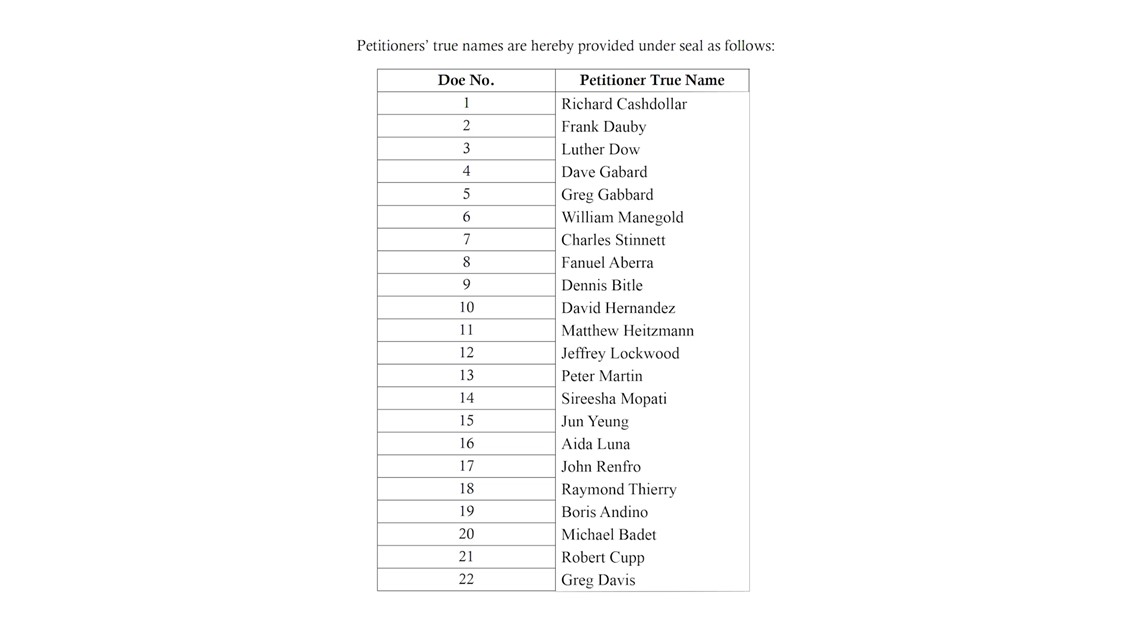
That fact alone might have been enough for some courts to drop the lawsuit, according to First Amendment Expert and UCLA Law Professor Eugene Volokh.
“Usually courts say that once the cat is out of the bag, nothing more to be done,” Volokh said. “Especially when it was the subjects’ or their lawyers’ fault.”
California’s 3rd District Court of Appeal went the other direction, attempting to “claw back” the information.
The justices went so far as to censor a legal filing from ABC10 that included an image of how the 22 names appeared in the television report.
The court has not engaged in any attempt to censor ABC10's reporting of the names, which Volohk said would undoubtedly be unconstitutional prior restraint.
Ramsey cautioned the court that granting anonymity to PG&E’s employees in the Camp Fire case, beyond a group of low level employees who work locally in the Paradise area, would set a dangerous precedent of secrecy in the courts.
He pointed to the First Amendment and the presumption that what happens in the legal system should be transparent to the public.
“This court, when it makes its decision, the justices here will sign their names,” Ramsey said.
People are still angry at PG&E
In a remarkable moment toward the end of his time arguing to the court, the attorney paid for by PG&E argued that anonymity his clients want is made more urgent by PG&E’s continued record of disasters.
Shepard said the employees named in the Camp Fire documents continue to be at risk “because of all the continuing fires and PSPS shut-offs around the state and the fact that the transcripts tie all of those errors together by saying, ‘PG&E was putting profits over safety. PG&E was putting profits over safety.’”
To Bradley and many other Camp Fire survivors, that’s precisely the point.
Arson investigators found PG&E sparked more large, destructive fires each of the three years since the Camp Fire.
PG&E faces dozens of criminal charges in the 2019 Kincade and 2020 Zogg fires. The Zogg case, which a federal judge says PG&E knows "good and well" that it started, includes four new felony manslaughter counts.

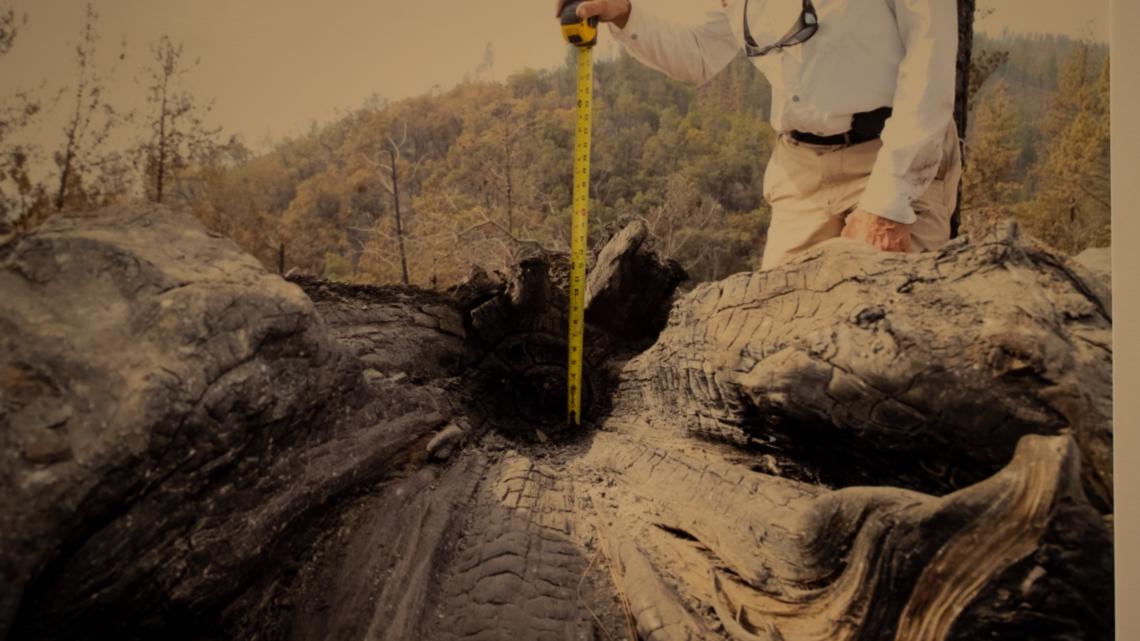
Bradley isn't looking for a vendetta list, he’s looking for the complete facts about the crimes that killed his grandmother. And he's looking for the fires to stop.
"My greatest dream is that no one ever has to experience those feelings again," Bradley said.
No one at PG&E went to jail for the Camp Fire crimes. The PG&E corporate entity pleaded guilty, paying a $3 million fine for its maximum punishment.
Prosecutors said they couldn’t prove criminal behavior by any individuals at PG&E beyond a reasonable doubt.
But there’s also no doubt that the crimes at PG&E were committed by people.
Those who had a hand in the decisions that caused the disaster avoided prison, but Bradley says they shouldn’t be allowed to avoid sunshine.
“They should be known for what they have done,” Bradley said. “Be held accountable... in a little way.”

